Lentiviral pseudotype deep mutational scanning of SARS-CoV-2 spike
Jesse Bloom
Fred Hutch Cancer Center / HHMI
Disclosures
I am on the scientific advisory boards of Apriori Bio and Oncorus
I have consulted on topics related to viral evolution for Moderna and Merck
I am an inventor on Fred Hutch licensed patents related to deep mutational scanning of viral proteins
Deep mutational scanning measures effects of many mutations to viral proteins

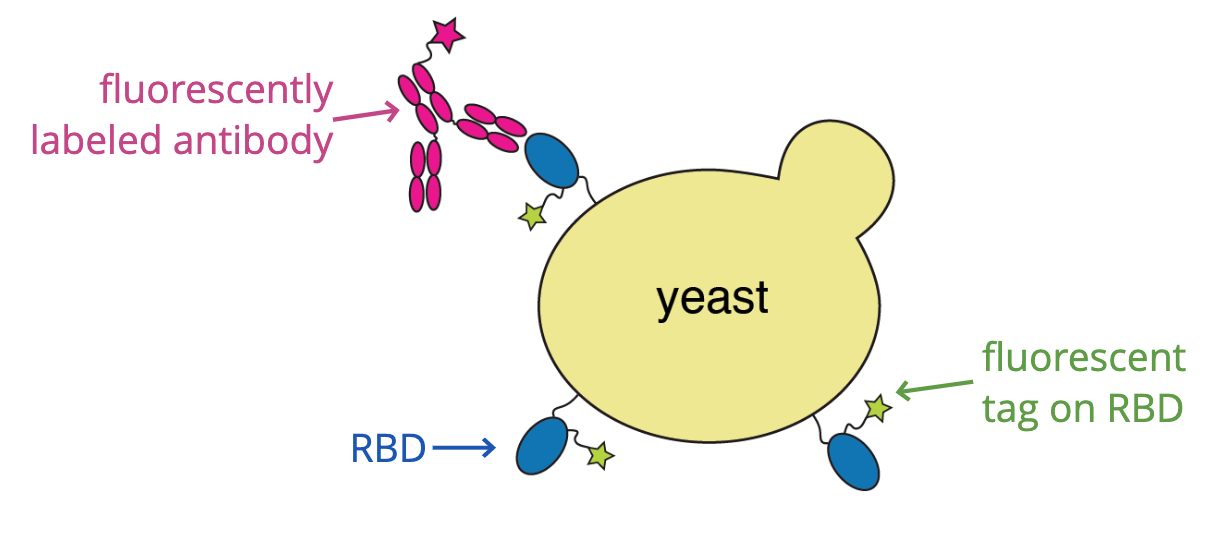
Current deep mutational scanning used by our group and that of Yunlong Cao et al are based on yeast displaying libraries of the spike receptor-binding domain (RBD) and selecting for antibody or ACE2 binding.
Limitations of RBD yeast-display deep mutational scanning
- Only examines mutations in RBD, which is just part of spike
- Measures antibody binding, not neutralization. They are unequal in polyclonal serum.
- Only works for viral entry proteins with domains amenable to yeast display.
Alternative: lentiviral pseudotyping
- Many viruses have entry proteins amenable to lentiviral pseudotyping.
- However, traditional pseudotyping does not create genotype-phenotype link.
Two-step method to create genotype-phenotype linked spike-pseudotypes
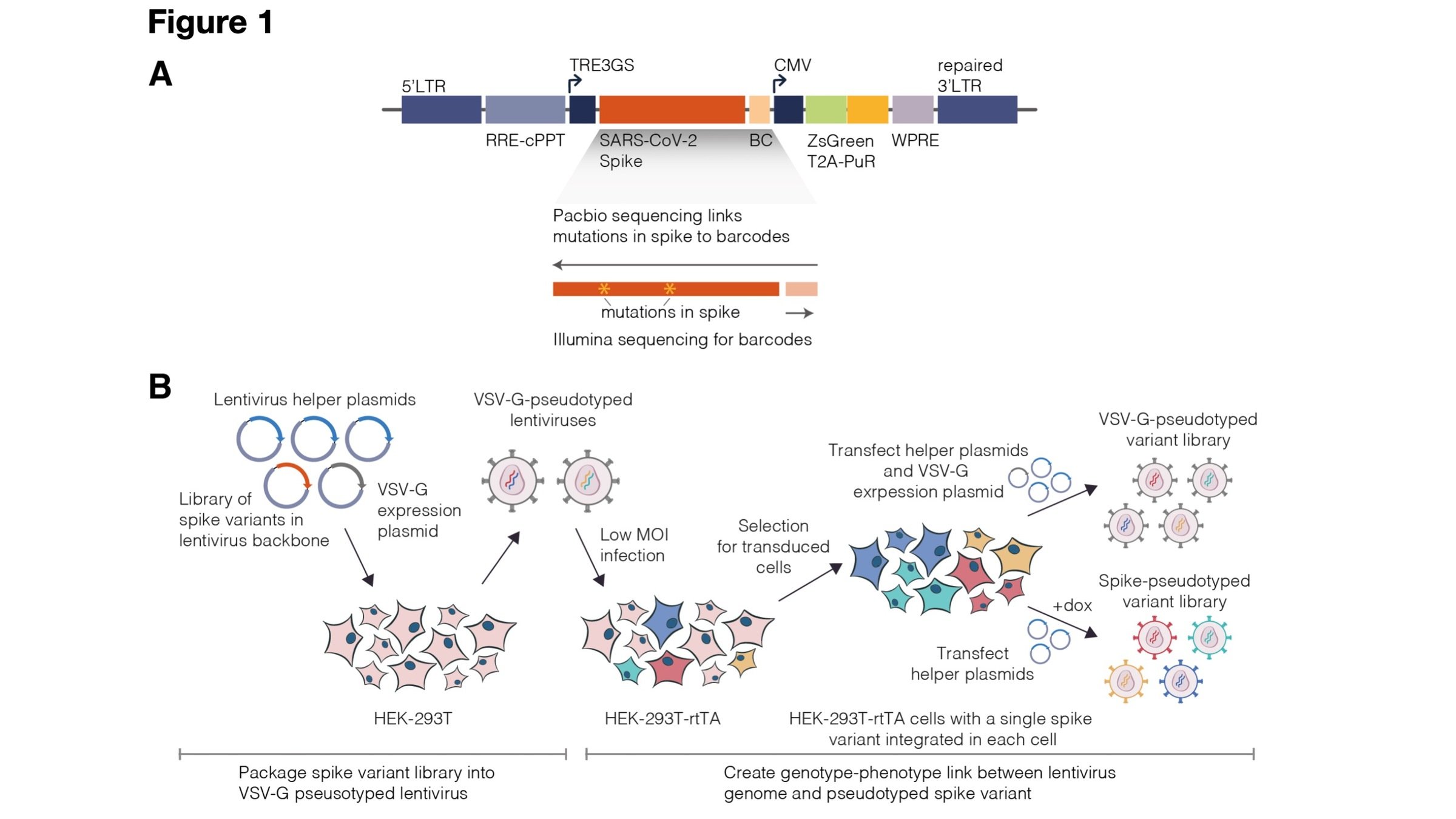
Sequencing only measures relative amounts, so include "absolute standard"
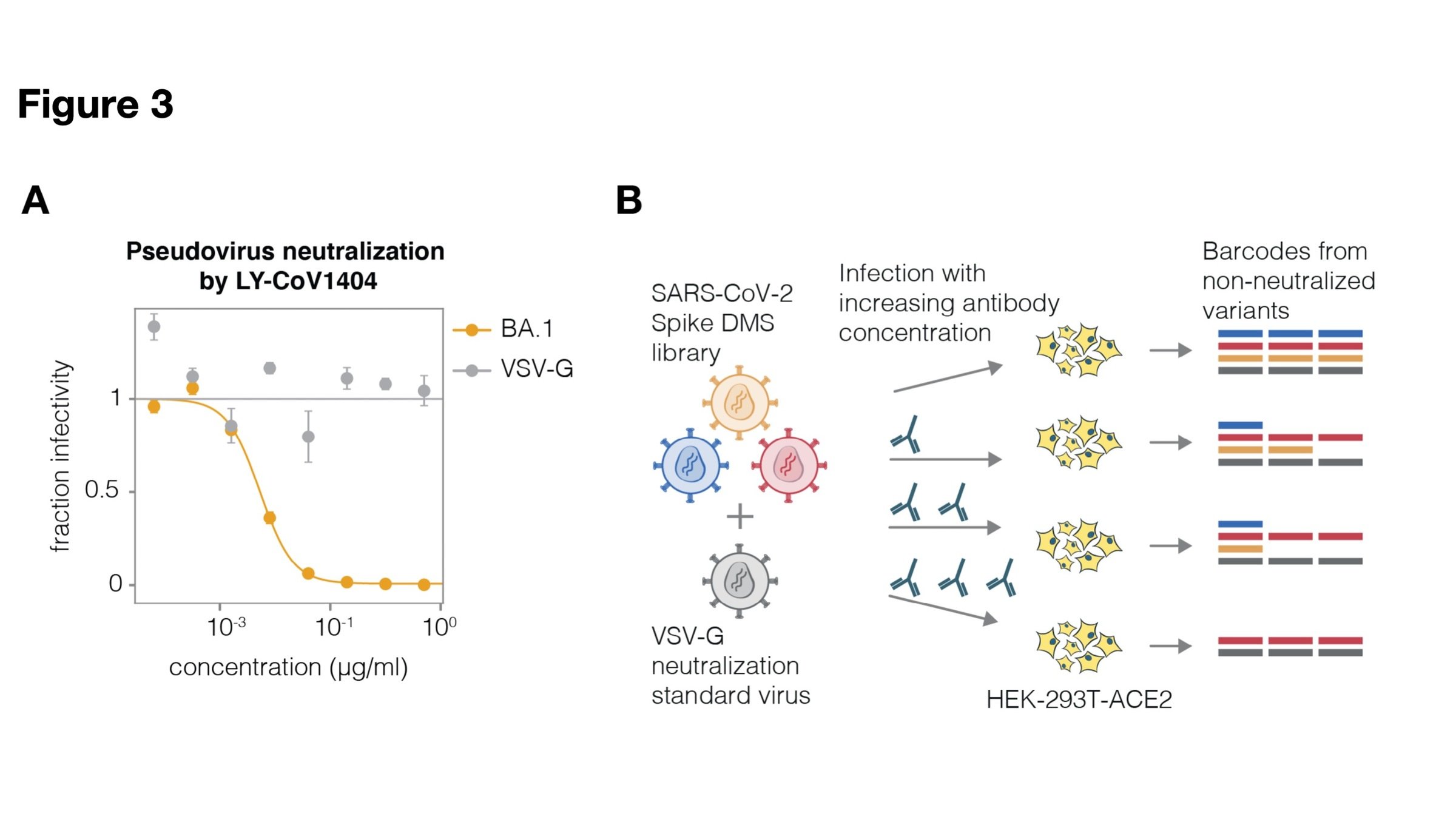
Example: RBD antibody LY-CoV1404
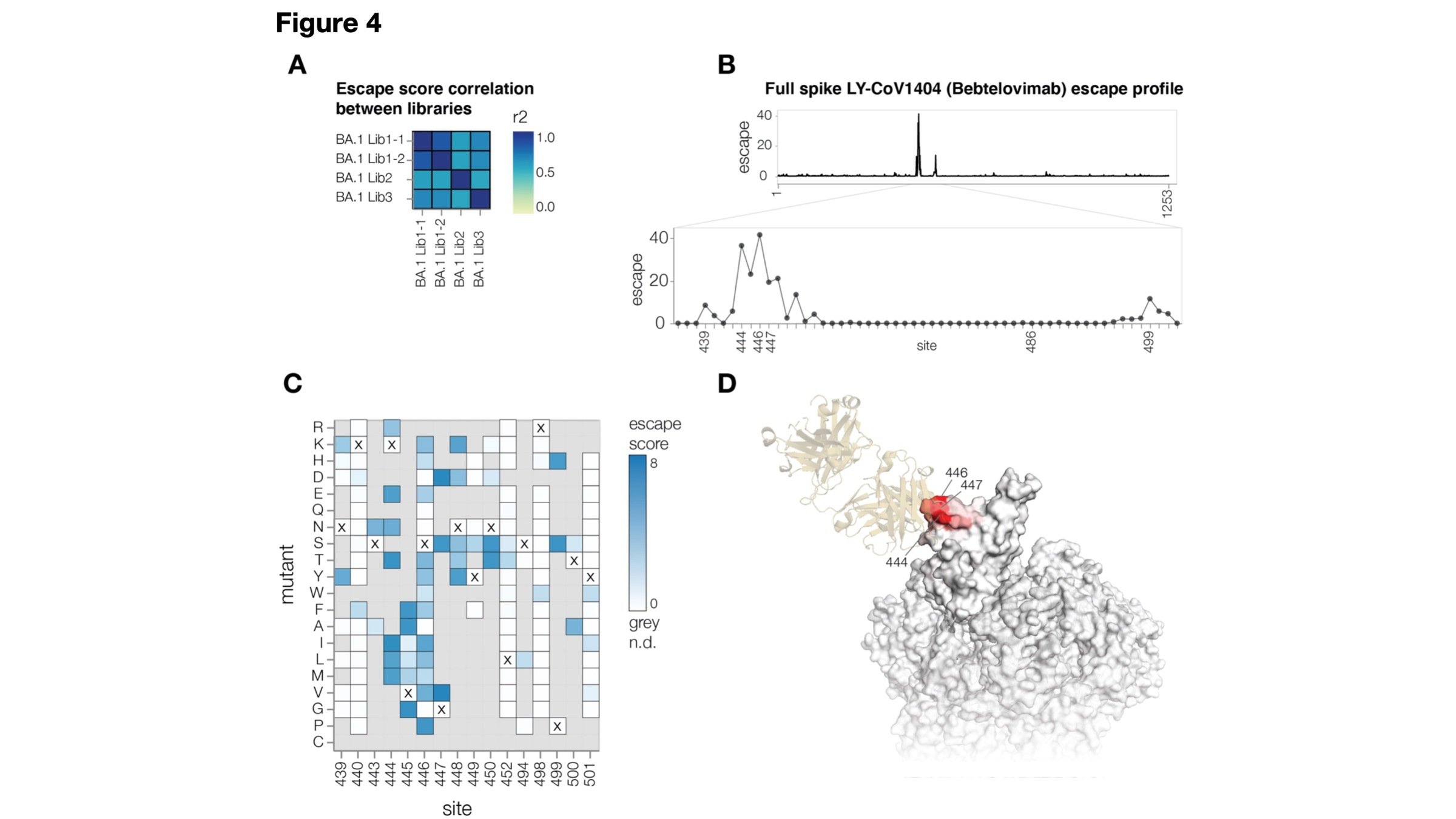
Validates very well
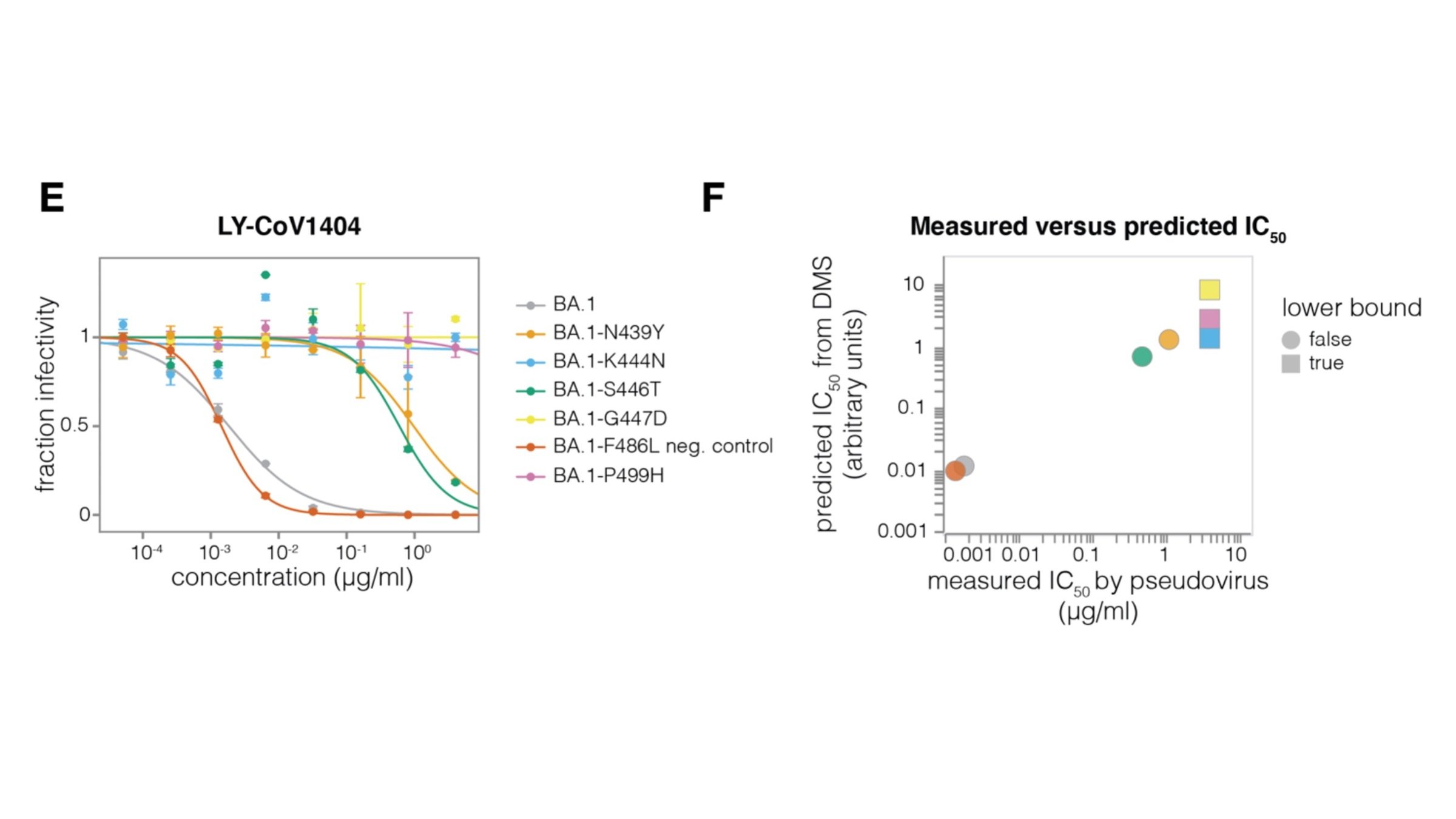
Also works for NTD antibodies

Also works for S2 antibodies
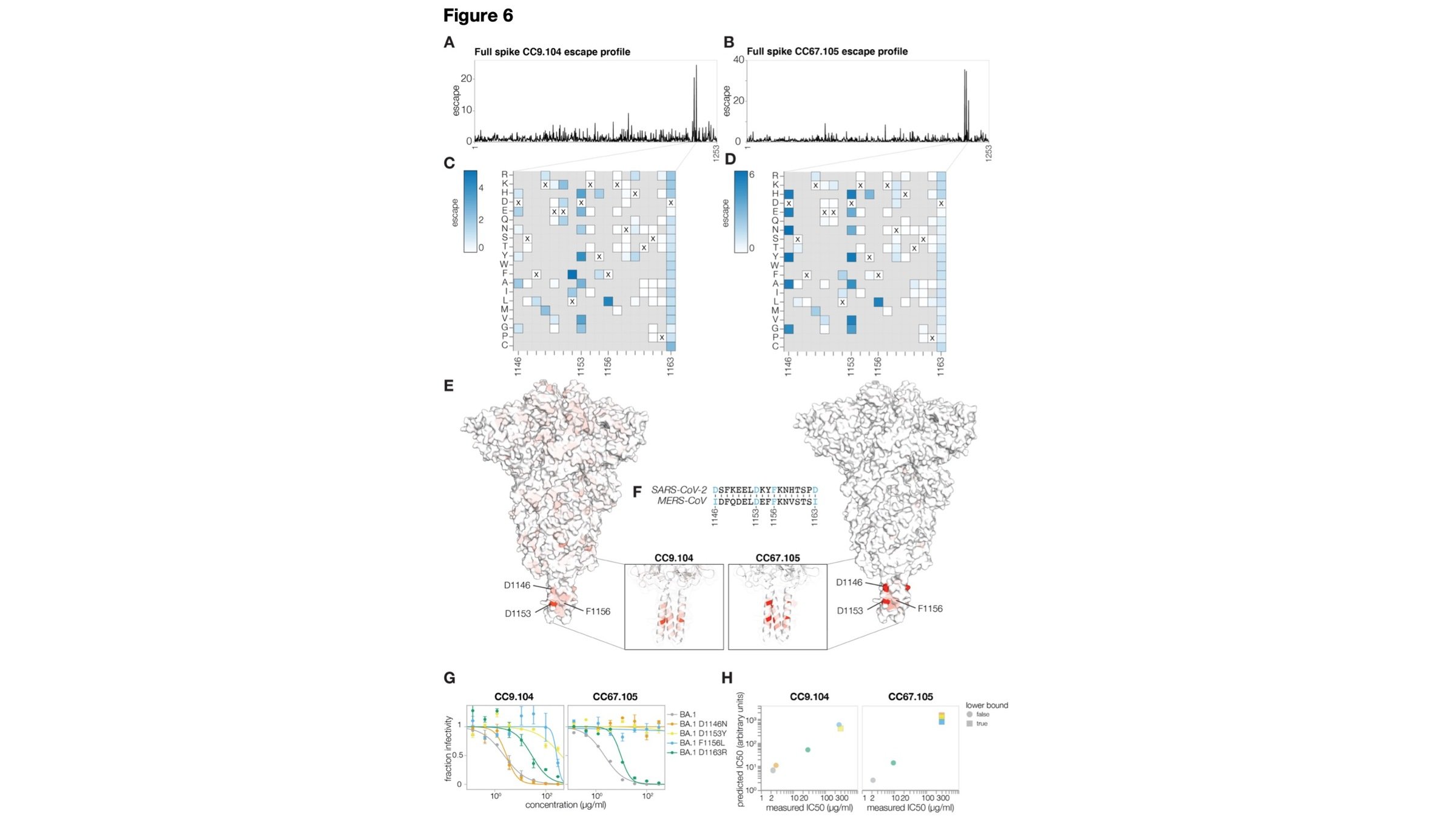
Method should be extensible to many other viral entry proteins
- System can provide safe way to do high-throughput mutational studies
- We need to be aware of information hazard
- We think hazard low for SARS-CoV-2 spike, which is already human adapted
- But maybe hazard of human-receptor adaptive mutations in potential pandemic viruses
- For such viruses, we propose to use natural host rather than human receptors